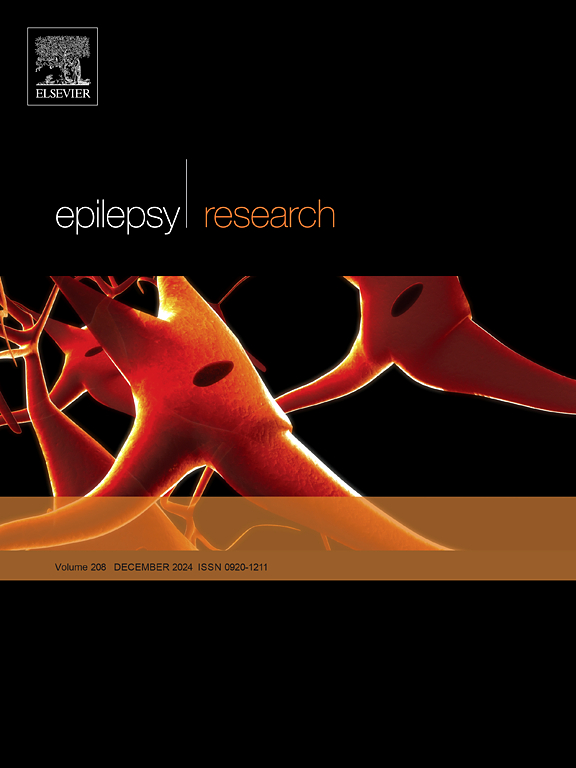Impact of valproate therapy on timing of puberty in adolescents with childhood-onset epilepsy
IF 2
4区 医学
Q3 CLINICAL NEUROLOGY
引用次数: 0
Abstract
Background
Data regarding the timing of puberty in adolescents with childhood-onset epilepsy is scarce. This study aimed to explore whether pre-pubertal valproate intake negatively affects the timing of puberty.
Methods
In this cross-sectional study, adolescents with childhood-onset epilepsy were asked to report when they attained Tanner 2 thelarche and gonadarche, respectively, using a Tanner self-staging score. Girls aged 13–18 years and boys aged 14–18 years -the ages at which the definition of delayed puberty can be applied- were included. Data regarding the pre-pubertal period were recorded, including seizure frequency/month, longest seizure-free interval, valproate intake, and duration.
Results
Eighty-one PWE (48 boys and 33 girls) were included. Forty-nine patients received valproate during the pre-pubertal period. Only 18 patients (22.2 %) had delayed onset puberty (4 girls and 14 boys). Delayed menarche was identified in 7 girls. Patients with delayed onset puberty had significantly younger age at epilepsy onset and shorter pre-pubertal longest seizure-free interval than patients with normal onset (P = 0.01, for each). Furthermore, the percentage of patients who received pre-pubertal valproate was significantly higher in patients with delayed puberty (94.4 %) than in patients with normal onset puberty (50.7 %), with significantly longer treatment duration in the former group (P = 0.0006). Duration of pre-pubertal valproate intake was an independent predictor for delayed onset puberty (OR=1.36, 95 %CI =1.14–1.62) while female sex had a protective effect (OR=0.21, 95 %CI =0.04–0.92).
Conclusion
Pre-pubertal valproate intake might delay pubertal onset in both sexes with epilepsy. Serial assessment to track pubertal development across the adolescence period is highly needed.
丙戊酸治疗对儿童期癫痫青少年青春期时间的影响
背景:关于儿童期癫痫发作的青少年青春期时间的数据很少。本研究旨在探讨青春期前丙戊酸盐摄入是否会对青春期时间产生负面影响。方法在这项横断面研究中,使用Tanner自我分期评分,要求儿童期癫痫发作的青少年分别报告何时达到Tanner 2期和性腺功能。年龄在13-18岁的女孩和14-18岁的男孩——青春期延迟的定义可以适用的年龄——被包括在内。记录青春期前的数据,包括癫痫发作频率/月、最长无发作间隔、丙戊酸盐摄入量和持续时间。结果共纳入81例PWE,其中男48例,女33例。49例患者在青春期前接受丙戊酸治疗。只有18例(22.2% %)延迟性青春期(女孩4例,男孩14例)。7名女孩月经初潮延迟。青春期延迟发作患者癫痫发作年龄明显低于正常发作患者,青春期前最长无发作间隔明显短于正常发作患者(P值分别为 = 0.01)。延迟性发育期患者接受青春期前丙戊酸治疗的比例(94.4 %)明显高于正常性发育期患者(50.7 %),且延迟性发育期患者接受治疗的时间明显长于正常性发育期患者(P = 0.0006)。青春期前丙戊酸盐摄入的持续时间是延迟性青春期的独立预测因子(OR=1.36, 95 %CI = 1.14-1.62),而女性性别具有保护作用(OR=0.21, 95 %CI = 0.04-0.92)。结论青春期前摄入丙戊酸盐可延缓男女癫痫患者青春期发病。跟踪青春期发育的系列评估是非常必要的。
本文章由计算机程序翻译,如有差异,请以英文原文为准。
求助全文
约1分钟内获得全文
求助全文
来源期刊

Epilepsy Research
医学-临床神经学
CiteScore
0.10
自引率
4.50%
发文量
143
审稿时长
62 days
期刊介绍:
Epilepsy Research provides for publication of high quality articles in both basic and clinical epilepsy research, with a special emphasis on translational research that ultimately relates to epilepsy as a human condition. The journal is intended to provide a forum for reporting the best and most rigorous epilepsy research from all disciplines ranging from biophysics and molecular biology to epidemiological and psychosocial research. As such the journal will publish original papers relevant to epilepsy from any scientific discipline and also studies of a multidisciplinary nature. Clinical and experimental research papers adopting fresh conceptual approaches to the study of epilepsy and its treatment are encouraged. The overriding criteria for publication are novelty, significant clinical or experimental relevance, and interest to a multidisciplinary audience in the broad arena of epilepsy. Review articles focused on any topic of epilepsy research will also be considered, but only if they present an exceptionally clear synthesis of current knowledge and future directions of a research area, based on a critical assessment of the available data or on hypotheses that are likely to stimulate more critical thinking and further advances in an area of epilepsy research.
 求助内容:
求助内容: 应助结果提醒方式:
应助结果提醒方式:


